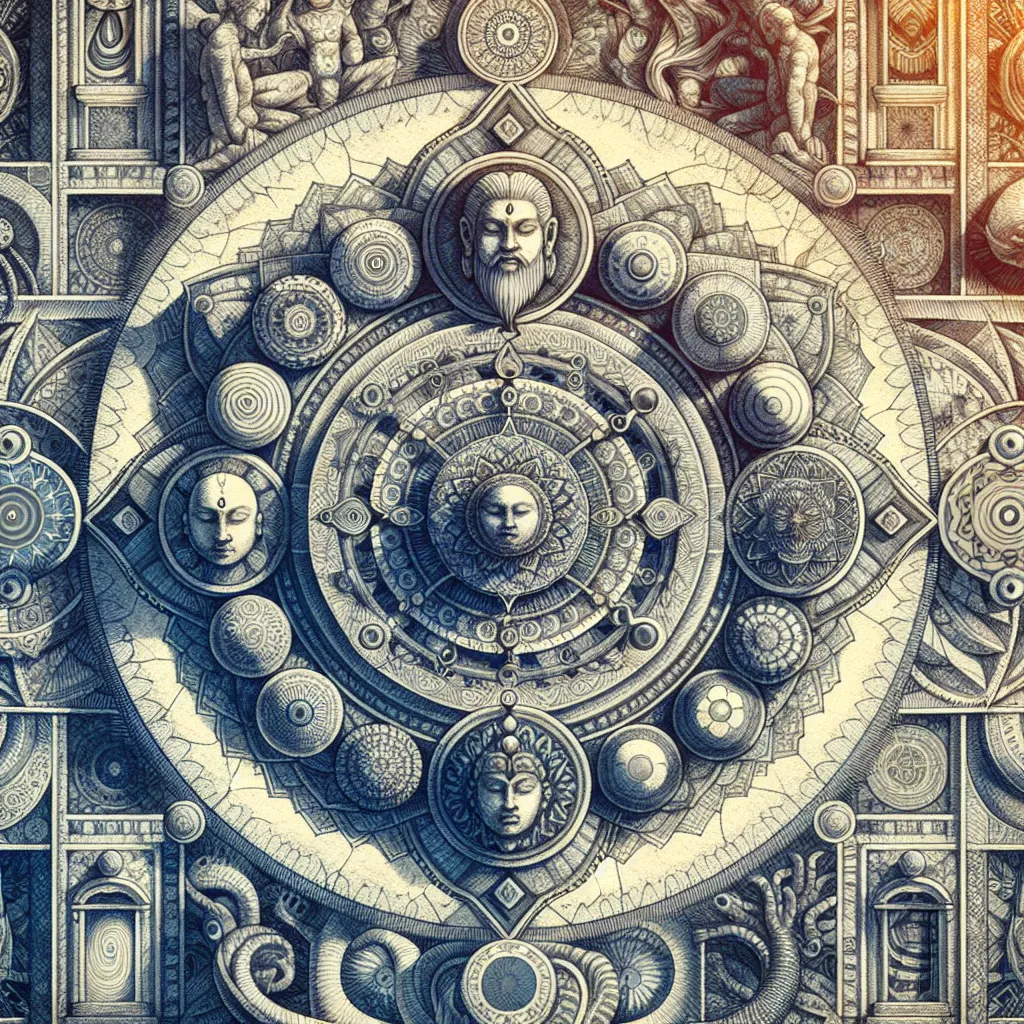
- Published on
- Authors

- Name
- You
The Origins of Kundalini: Ancient Roots and Modern Understanding
Introduction
Kundalini, often referred to as the "serpent power," is a concept in yogic traditions that has captivated the minds of spiritual seekers for centuries. Its roots lie deep in ancient Indian spirituality, and its significance has evolved through time, blending mystical wisdom with modern scientific interpretations.
Ancient Yogic Traditions
Vedic Texts
The concept of Kundalini can be traced back to the ancient Rig Veda (circa 1500 BCE), one of the oldest known religious texts. Here, we find early references to a mystic fire both internal and external, symbolizing a latent spiritual force.
| Text | Time Period | Reference to Kundalini |
|---|---|---|
| Rig Veda | 1500 BCE | Internal sacred fire |
| Atharva Veda | 1200 BCE | Energy channels and winds |
Tantric Scriptures
The detailed understanding of Kundalini as a coiled serpent at the base of the spine emerges from the Tantric scriptures (circa 8th to 12th centuries CE), such as the Shiva Samhita and Hatha Yoga Pradipika. In these texts, Kundalini is portrayed as a dormant energy coiled three and a half times around the base chakra (Muladhara) and is awakened through specific practices.
| Text | Time Period | Description of Kundalini |
|---|---|---|
| Shiva Samhita | 11th century CE | Coiled serpent energy |
| Hatha Yoga Pradipika | 15th century CE | Energetic awakening |
Journey Through the Chakras
The Chakra System
Central to the concept of Kundalini is the chakra system—seven energy centers aligned along the spine, starting from the root (Muladhara) to the crown (Sahasrara). Each chakra represents different physical, psychological, and spiritual states.
| Chakra | Location | Aspect |
|---|---|---|
| Muladhara | Base of Spine | Survival, grounding |
| Svadhisthana | Sacral Region | Creativity, sexuality |
| Manipura | Solar Plexus | Personal power, will |
| Anahata | Heart | Love, compassion |
| Vishuddha | Throat | Communication, expression |
| Ajna | Third Eye | Intuition, insight |
| Sahasrara | Crown | Enlightenment, unity |
Modern Interpretations
Scientific Correlations
In contemporary times, researchers have attempted to understand Kundalini through the lens of neuroscience and psychology. Concepts of bioelectricity, neuroplasticity, and psycho-spiritual development offer parallels to the ancient descriptions of Kundalini energy.
| Scientific Field | Key Concept | Correlation with Kundalini |
|---|---|---|
| Neuroscience | Bioelectricity | Energy flow in the nervous system |
| Psychology | Jungian Archetypes | Collective unconscious and individuation |
| Quantum Physics | Energy fields | Interconnected energetic fields |
Contemporary Practices
Modern spiritual teachers and yoga practitioners have adapted and refined Kundalini practices, making them accessible to a global audience. Techniques such as Kundalini Yoga, developed by Yogi Bhajan, integrate breathwork (pranayama), chants (mantras), and postures (asanas) to awaken this powerful energy.
| Practice | Description | Benefits |
|---|---|---|
| Kundalini Yoga | Breath, movement, sound | Physical vitality, spiritual awakening |
| Meditation | Focused energy work | Mental clarity, emotional balance |
| Energy Healing | Reiki, Qi Gong | Holistic healing, energy balance |
Conclusion
From ancient Vedic hymns to modern scientific exploration, the journey of Kundalini reflects humanity's endless quest for deeper understanding and spiritual elevation. As we continue to blend ancient wisdom with modern knowledge, the awakening of Kundalini stands as a powerful testament to our inherent potential and the infinite depths of the human spirit.
